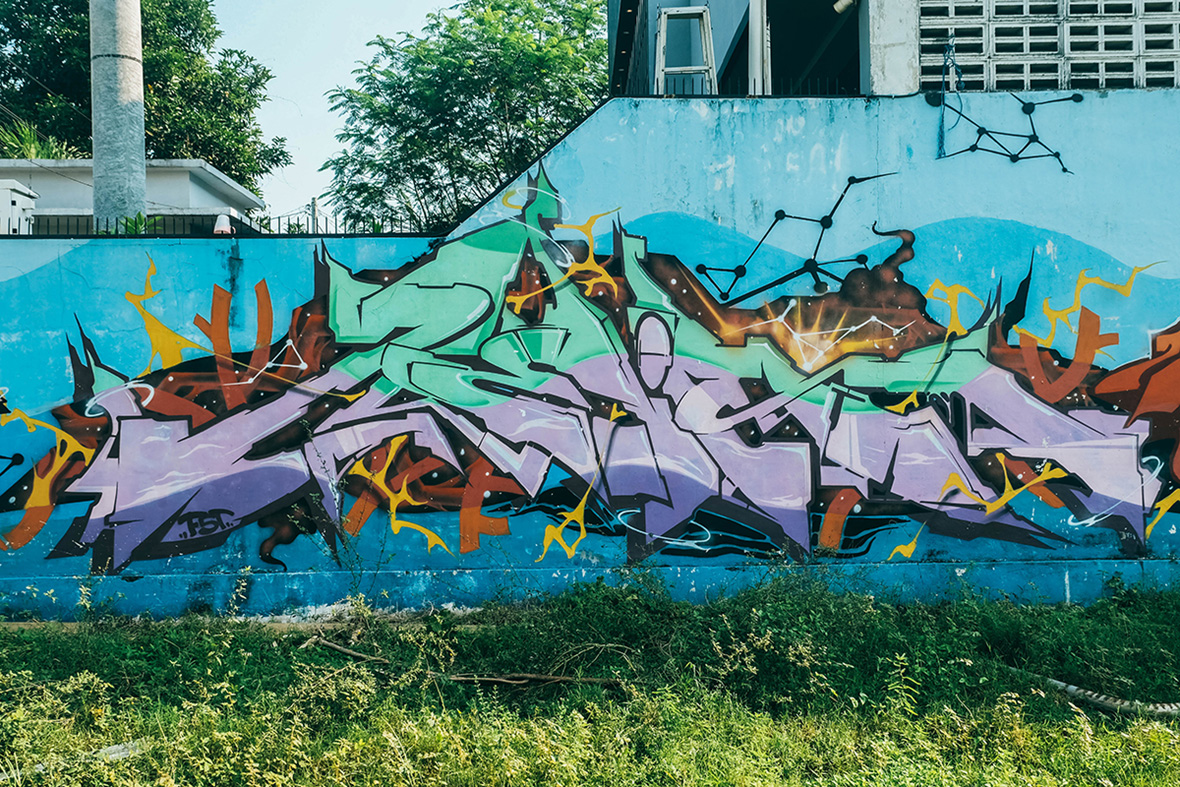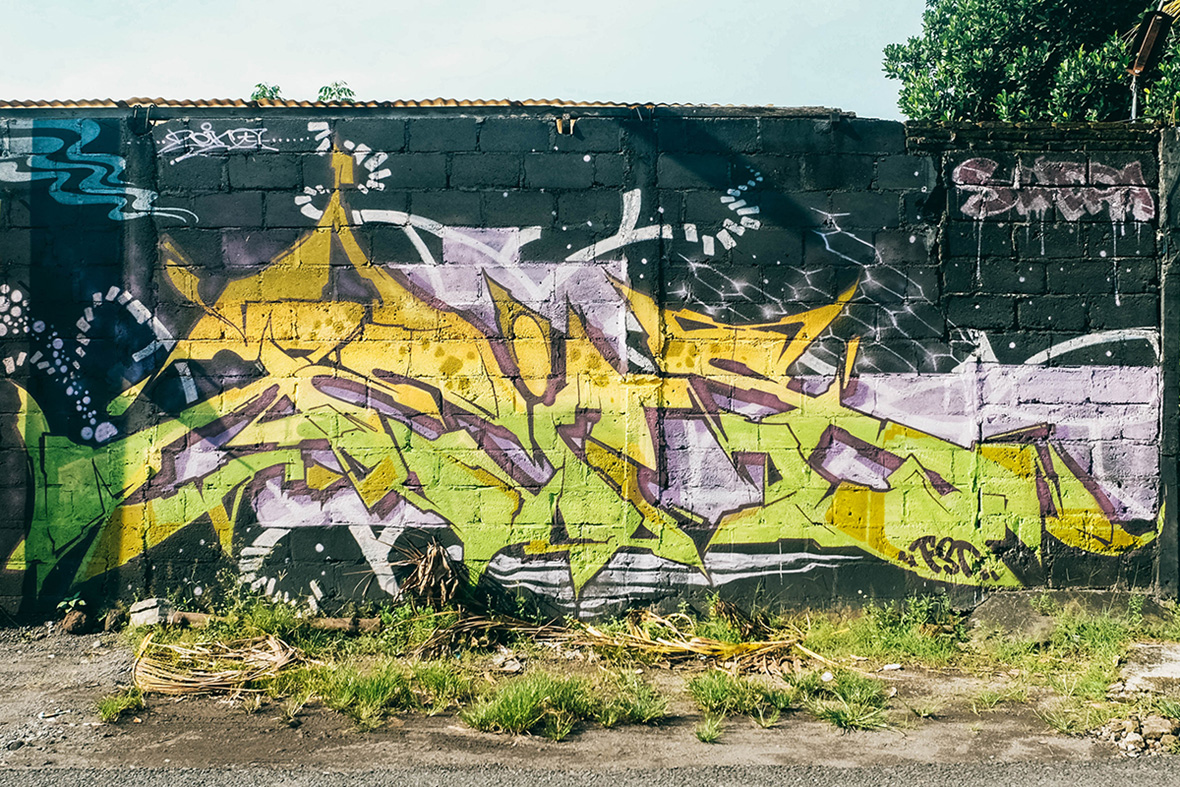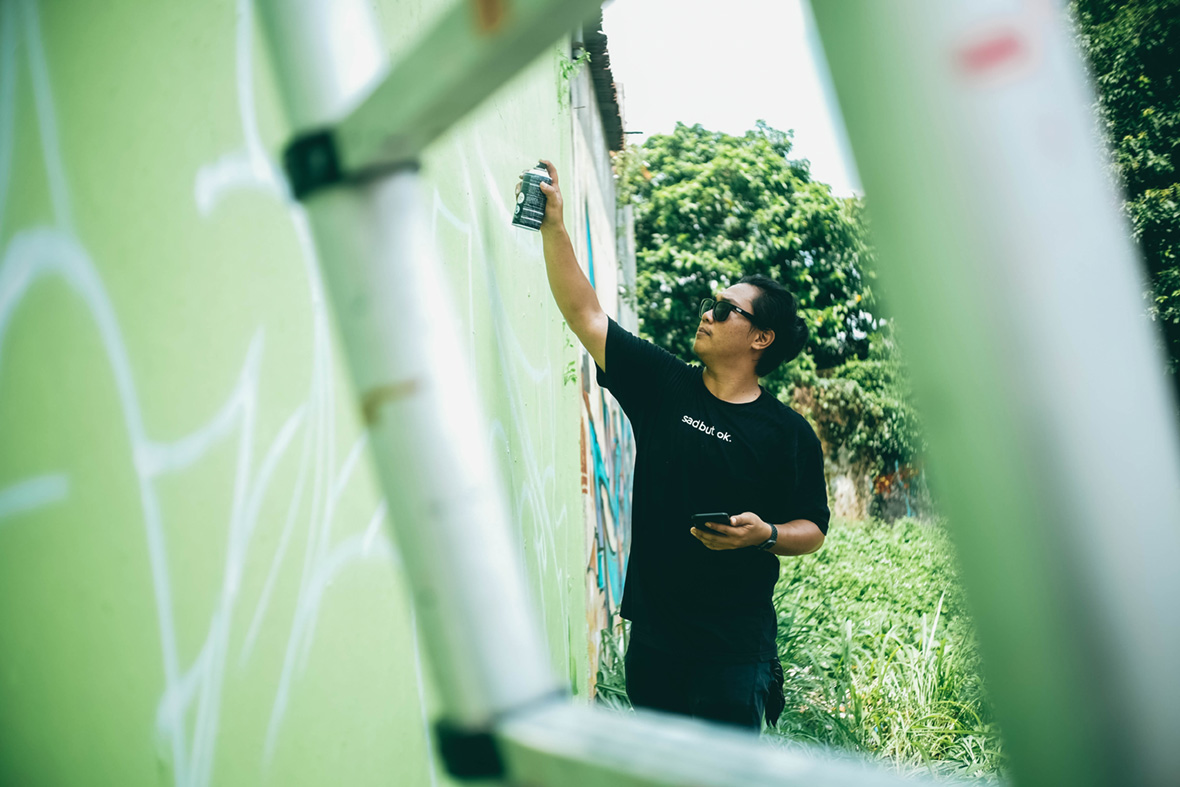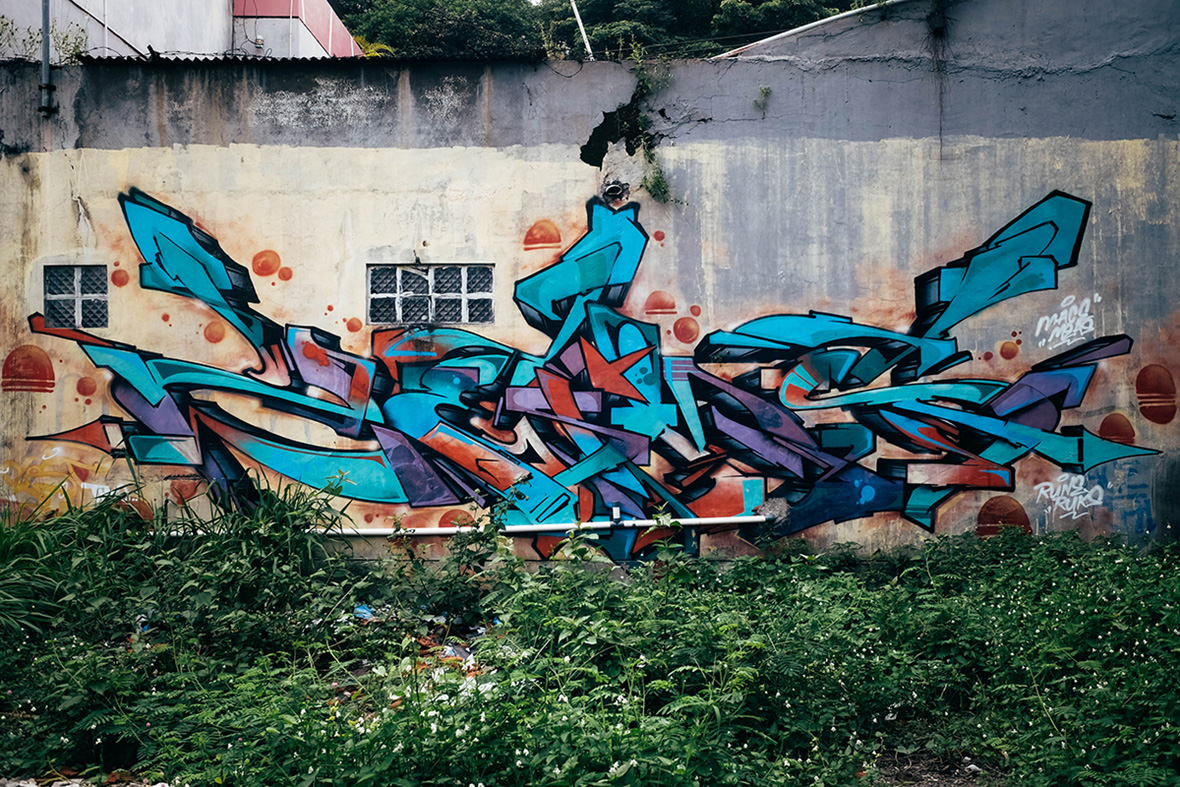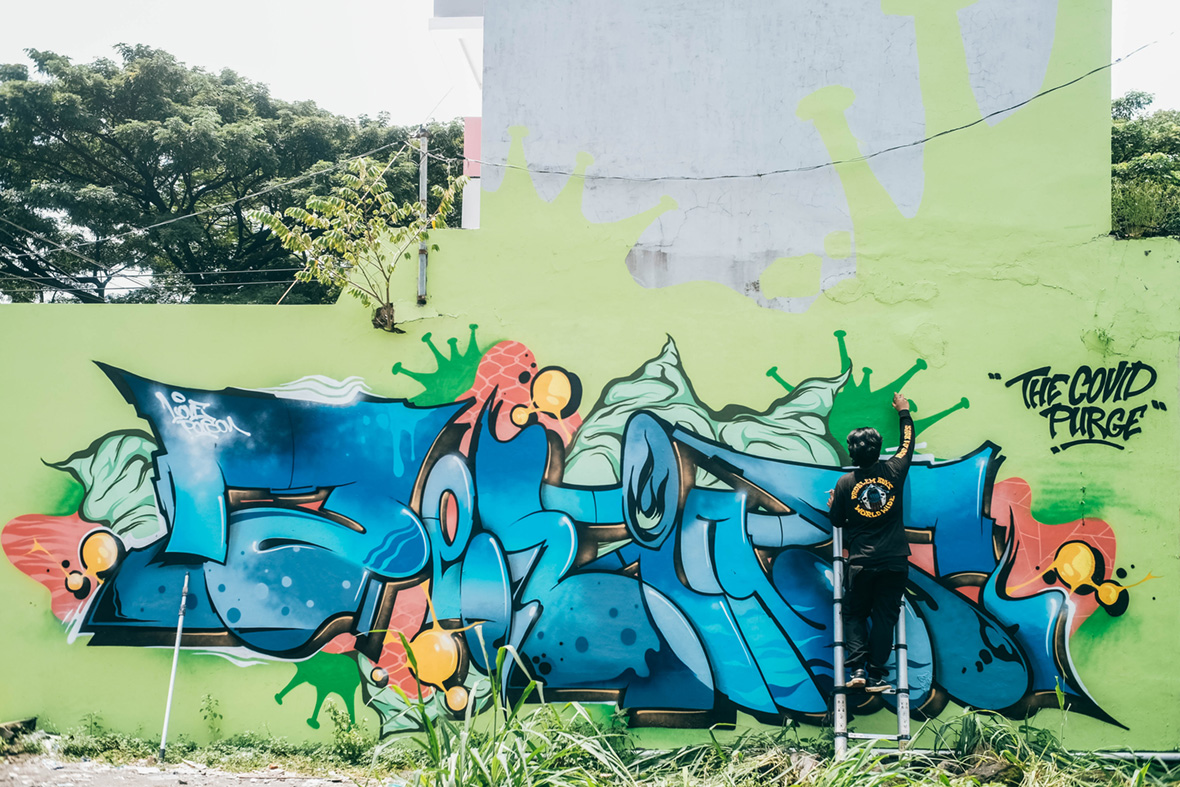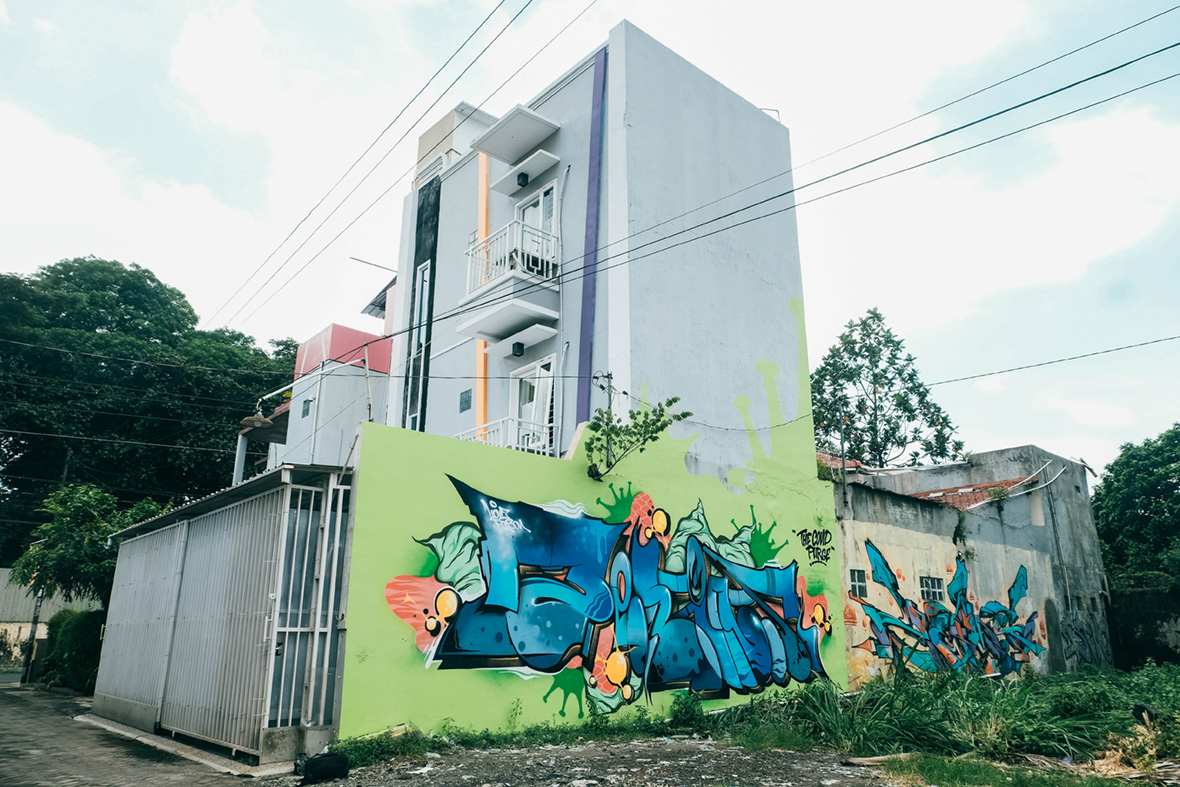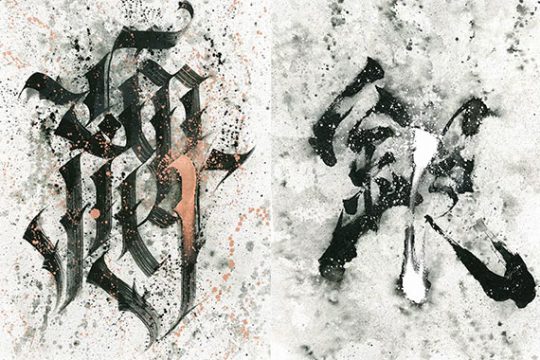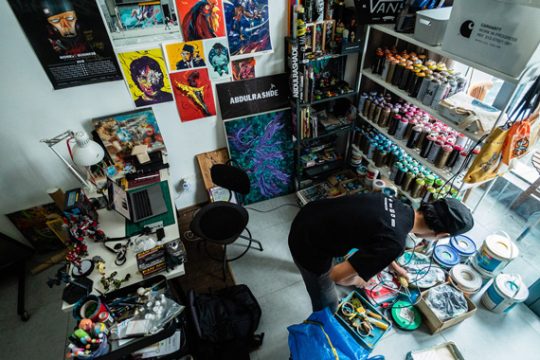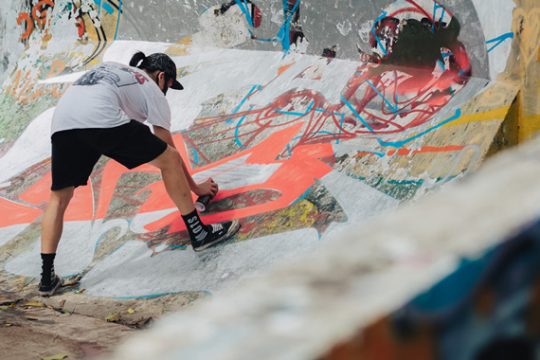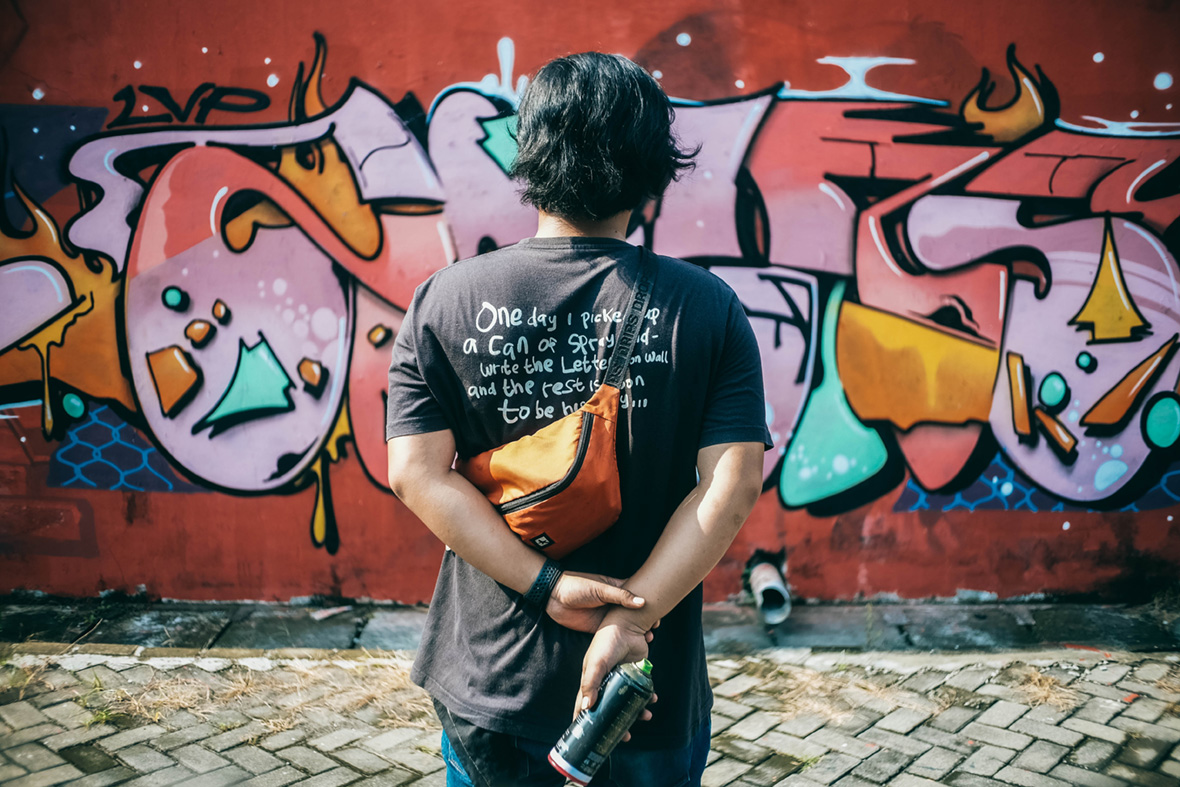
In an empty lot littered with piles of crumbling concrete, the name Zeins pops out with blazing colors and a jolt of motion. Based in Indonesia, the seasoned graffiti writer cavorts around his hometown of Yogyakarta, leaving behind his name and brightening dull walls with a graffiti style that changes from spot to spot. Sometimes, he might paint angry, 90s influenced burners; other times, pieces are more light-hearted, drawn in rubbery lines with a carefree energy.
在堆满了混凝土碎石块的空地上,巨大的彩色涂鸦拔地而起,炫然的色彩与强烈的动态感,让 “Zeins” 的字样十分抢眼。Zeins 就是创作这幅涂鸦的人,这些年来,这位才华横溢的涂鸦印尼艺术家四处游走在家乡日惹 (Yogyakarta),留下风格不尽相同的涂鸦签名,为灰蒙的墙壁上增添一抹明快。他的作品有时带着愤怒,像是受到 90 年代影响的 Burner(超劲作品,带着几分精细,需要耗费大量时间完成);有时画风一转,变成无忧无虑的线条,如同橡皮筋一样跳跃在墙壁上。
Zeins says he never felt inclined to follow graffiti’s pivot into street art, which saw the rise of more illustrated characters and abstract designs. His focus on lettering is simply what he enjoys. “Graffiti feels freer to me,” he explains. “Maybe it’s just because graffiti is what I started with. I still like to find new ways of bringing letters to life.” When he’s not shaking a spray can, his typographic works also extends to canvases and digital designs.
Zeins 说自己从不刻意追随街头艺术的潮流,譬如最近越来越流行的人物插画和抽象风格;相比于前者,他更专注于字母涂鸦的创作。Zeins 解释说:“涂鸦对我来说更自由些,也许只是因为我最早接触的艺术形式就是涂鸦吧。到现在我还会享受创作新字体的过程。” 这份对字体艺术的热爱也逐渐延伸至 Zeins 涂鸦以外的创作上。除了使用五花八门的喷漆罐以外,他还会参与到设计和布面画的工作中。
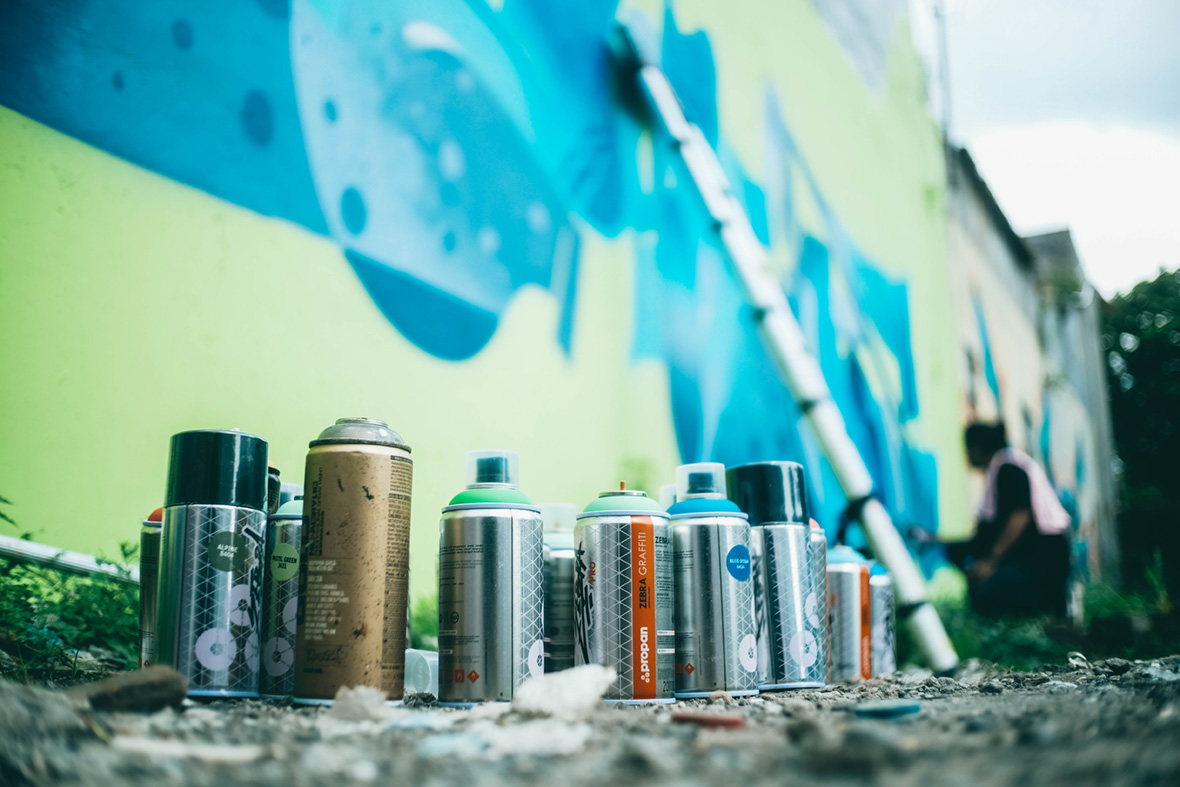
“When I was in middle school, I was a delinquent,” Zeins laughs, recalling how he got his start in 2008. “It was just for fun at first. My parents were not happy. There were already writers here and some of my friends got me into it. Writers from Europe and the US were a big inspiration, too.”
回忆起在 2008 年刚接触涂鸦,Zeins 笑着说:“我读初中时是一个不良少年。最开始只是为了好玩,父母也不喜欢我涂鸦。当时身边朋友已经有一些涂鸦艺术家,是他们带我上的道儿。早期那会儿,欧美涂鸦艺术家对我们影响很大。”
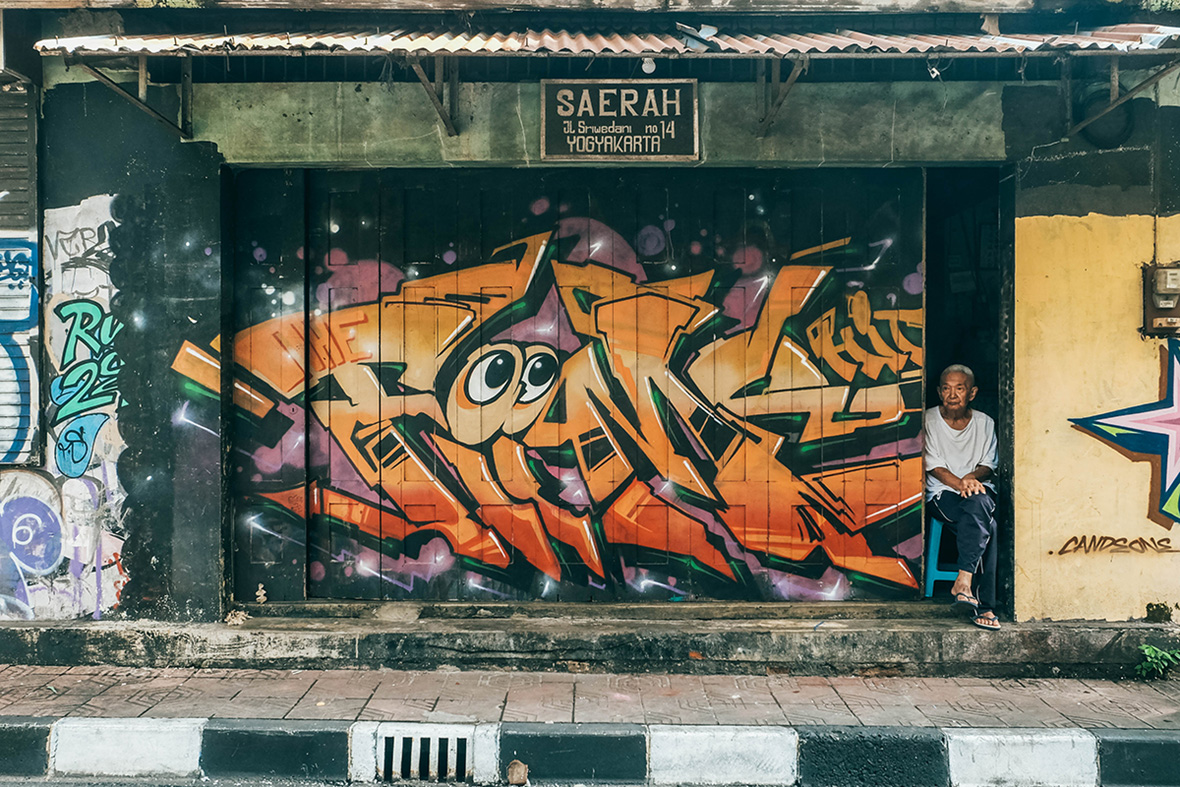
Although Jakarta got an earlier start than the rest of Indonesia and the graffiti scene there remains the most developed in the country, Yogyakarta has always had a strong reputation for visual art. “There were already so many artists here, it’s not surprising we ended up with a strong graffiti scene,” he says. “It’s pretty chill here. It’s easy to find spots to paint and the writers tend to respect each other. Lots of teenagers are getting interested, too, so it’s still growing.”
在印尼,雅加达是涂鸦艺术起步最早也是最成熟的城市,但日惹的视觉艺术一向享有很高的声誉。他说:“这里本来就有很大的艺术家群体,所以这儿的涂鸦圈子能发展到现在这样一点也不奇怪。在这里,大家对涂鸦都比较包容,很容易找到创作的场地。现在,有越来越多青少年的加入,涂鸦艺术家之间也相互尊重,所以这个圈子还在不断壮大中。”
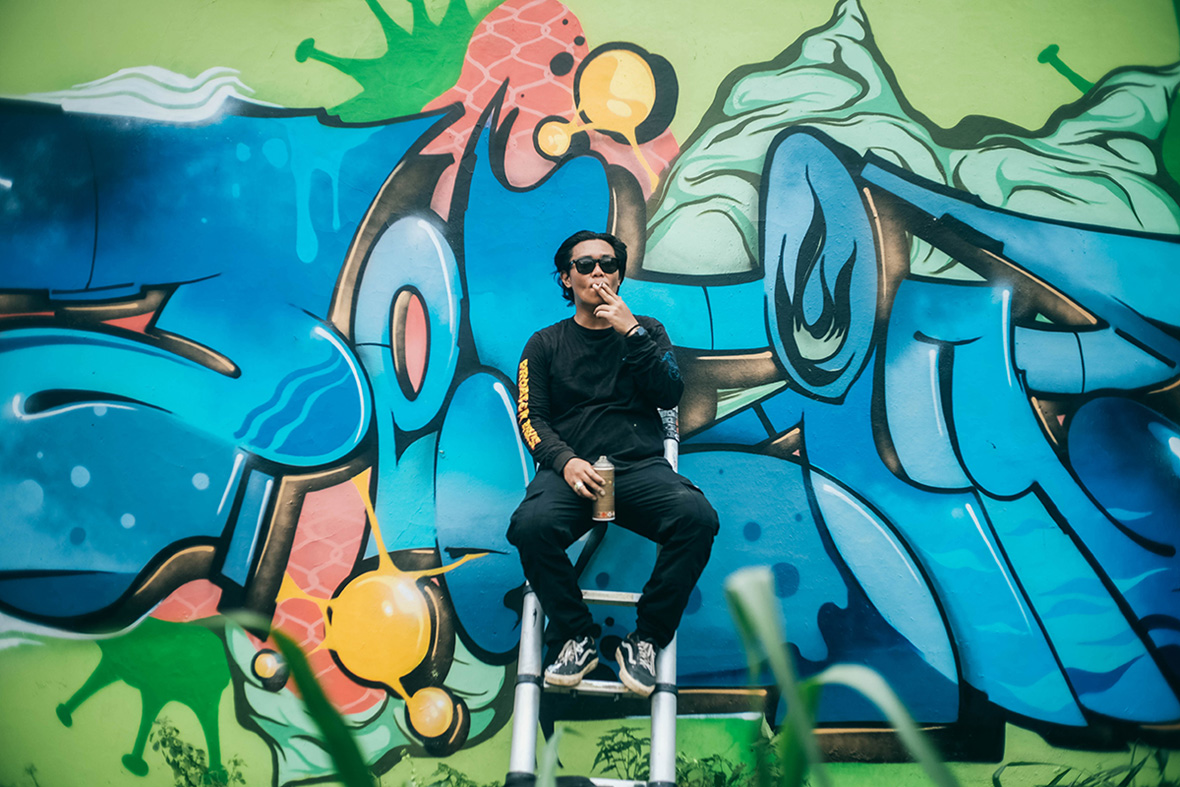
Tags and throw-ups are a common sight in the city nowadays and more kids are getting into it, but Zeins is no longer interested in sneaking around at night to bomb walls. “Getting permits isn’t hard at all. Sometimes we don’t even need to ask for permission and can just paint freely in the afternoon.”
Since graffiti is still relatively new in the city, everyday people don’t have hard-set opinions on it. “Some people actually feel like it’s meaningful and think it cheers things up,” he says “But that’s definitely not true for everyone.”
如今,Tag(艺术家签名)和 Throw-Up(泡泡字)在城市里随处可见,有越来越多小孩对这种艺术渐渐产生好奇。Zeins 说自己已经完全没有必要再趁夜晚偷偷摸摸地去涂鸦,“申请涂鸦许可证一点都不难,有时候我们甚至都不需要去申请许可,也可以整个下午在墙上涂鸦。”
Zeins 说,由于涂鸦在当地仍然算是新兴的艺术,大部分人都对涂鸦没什么大意见。他说:“一些人确实觉得涂鸦是一件令人振奋、很有意义的事情,但并不是所有人都这样想。”
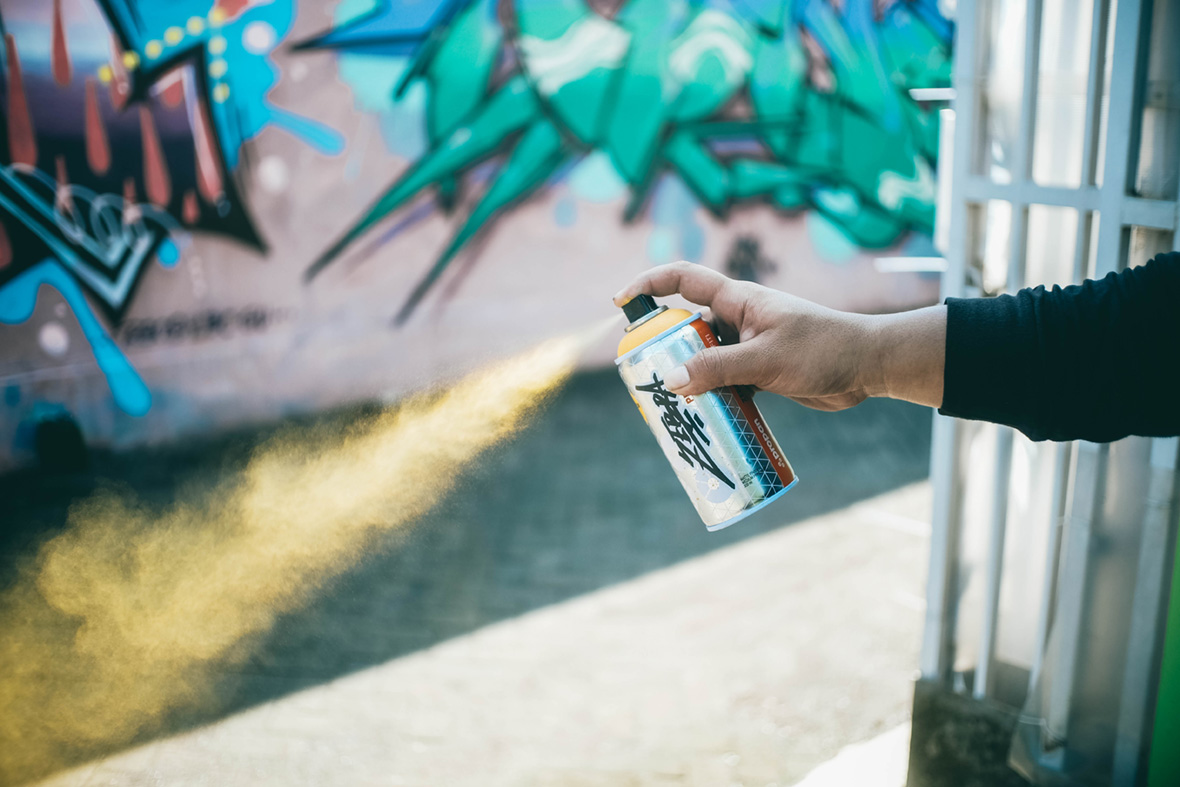
Like our stories? Follow us on Facebook and Instagram.
Instagram: @zeinsone
Contributor: Mike Steyels
Photographer: Amino Birahmatillah
Chinese Translation: Olivia Li

